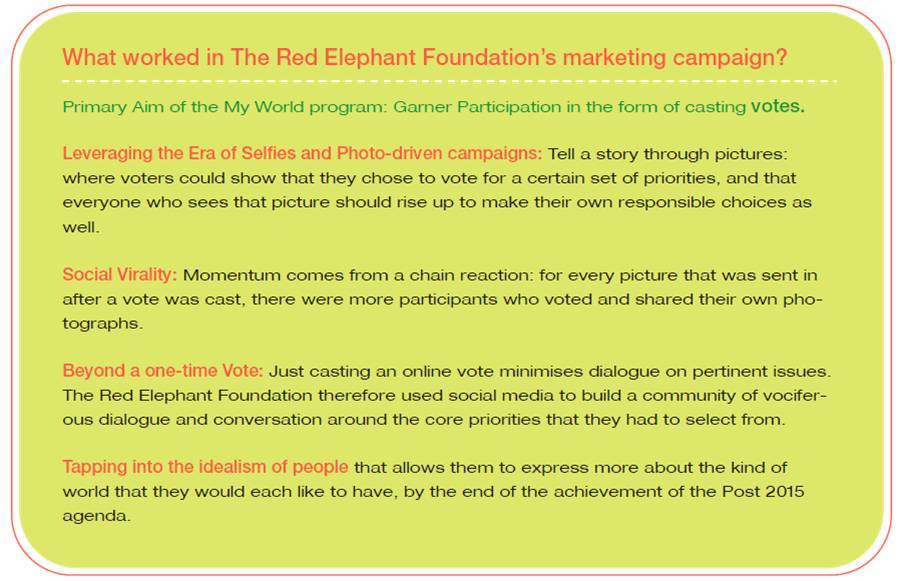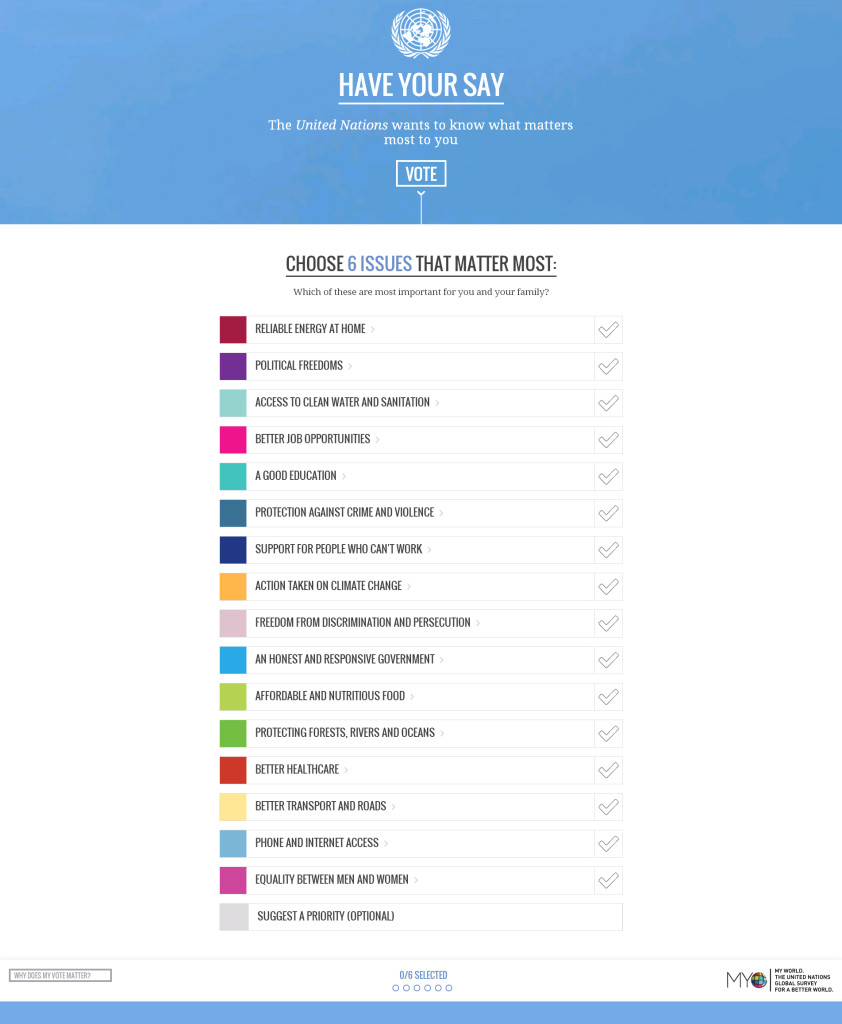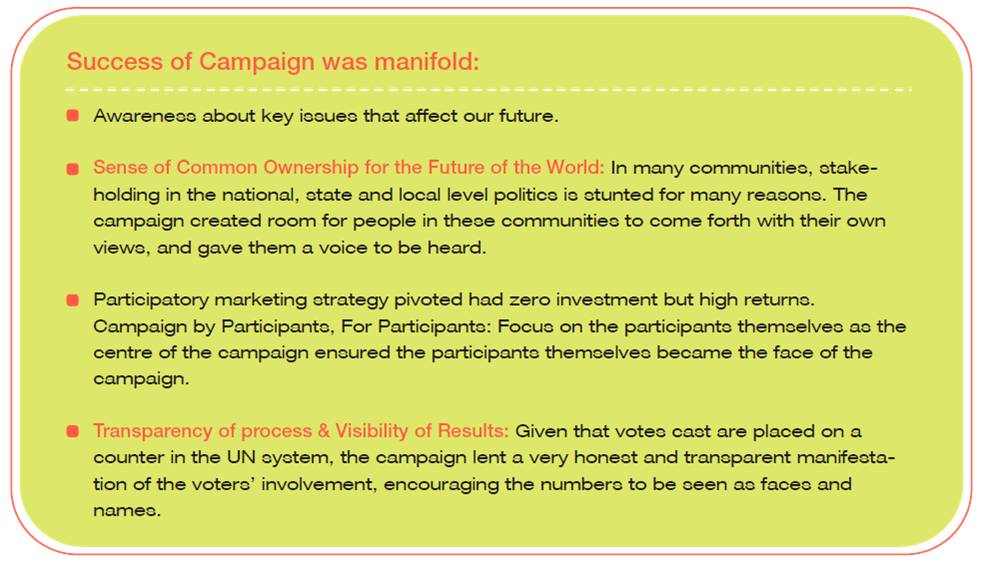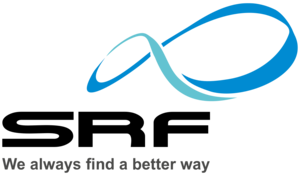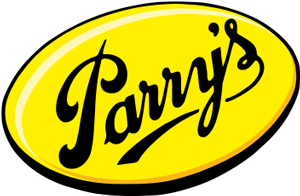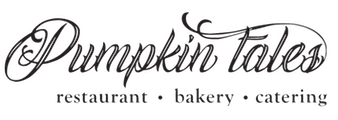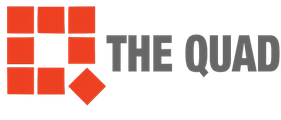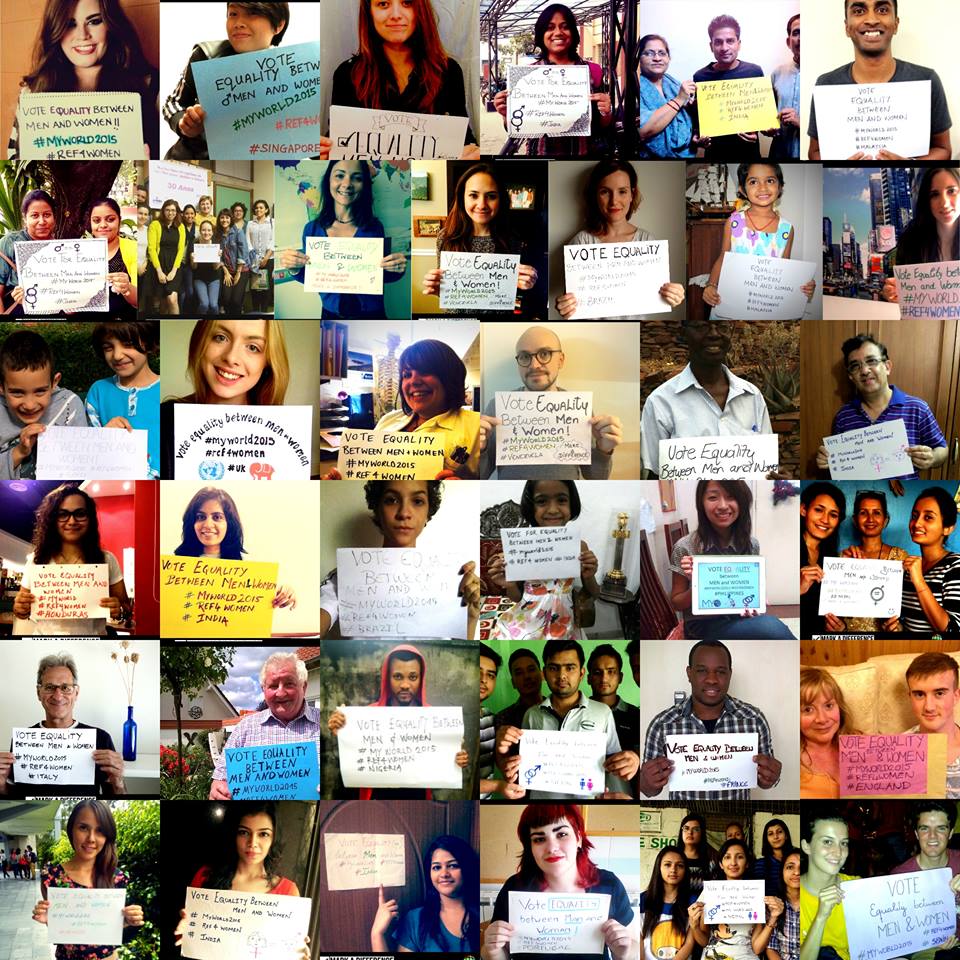
Social Media has the power to change how civil society participates and influences causes and issues they deeply care about.
Leveraging Social Media for the My World Campaign
Set up in June 2013, The Red Elephant Foundation’s work has pivoted around social media and digital media, as it works through storytelling and interactive engagement online. The primary task at hand was to garner votes for one of the My World Campaign, and to encourage as many people as possible to cast a vote. The underlying idea was to democratize the process to encourage the casting of a global vote each at the United Nations, thereby allowing people for the first time to have a direct say in shaping a better world. Regardless of the numbers, the votes matter: the UN is seeking to work closely with governments everywhere to define the next significant global agenda to address extreme poverty and preserve the planet. The data from MY World continues to inform these processes and be used by decision makers around the world.
As a translation of the strategizing, the Red Elephant Foundation marketed the voting process through its own campaign, titled “My Choice for My World“. The process was simple. They reached out to their community of users on the social network, and shared the link to casting the vote, and asked the voters to send in a photograph of themselves with the vote they cast, holding up a poster with the vote they cast, along with the words “#REF4Equality #MyWORLD”. The idea behind this was to encourage interactivity, and to encourage a sense of ownership of the common goal of creating a better future.
In implementing the campaign, the Red Elephant Foundation used social media to garner volunteers, and encouraged community building around each submission. It welcomed participants to cast a vote, and share a photograph of the voter, and then asked the participant to extend it further by getting more participants in and around their immediate community, their families and social circles. In less than six months, the campaign garnered close to 3000 votes across the world, from as far and wide as the United States and Australia, Egypt and Indonesia.
Recognizing that there was a black hole in social media access in certain countries that have laws prohibiting social networking, such as China, the campaign turned digital, as storytelling took precedence and they began to use the photographs collected to share them with people in these countries as an example of how they could be part of the global democratization in choosing the priorities that would define the future of the world. Using blog posts, storytelling and content driven marketing campaigns, the organization succeeded in bringing the lion’s share of votes for the campaign from China.
What are the key take home points from The Red Elephant Foundation’s campaign?
Engagement: The first take home is the value placed on engagement. While voting is engagement in its own right, it is not sufficient to allow the right to vote in a vacuum. Priorities for the future and for world peace hinge around many values and parameters for different communities – and to be able to discuss the priorities across borders, using the level playing platform of social media, brought communities together. Engagement for The Red Elephant Foundation is focused on the core theme of empathy-building through storytelling, and this campaign achieved that through photographs.
Exceptionally high ROI: The second take home is the low investment but high returns dimension of the campaign. In fostering a community of voters and having them share their own photographs, there was no investment whatsoever in crafting creative content. Given that each photo that was put up had its own immediate audience among friends and family of the submitter, and that the community of voters drove their own immediate communities into the campaign as participants, there was no investment in generating virality: the virality was already in place. This is especially useful for non-profits which have smaller budgets and lesser revenue, and have to make difficult decisions in making effective spending possible.
Our Take Away: Social media has applications that can greatly influence the way people around the world connect. It has the power to transform a need to participate in global issues to an actual action that is amplified by the participation of like-minded people, mitigating the limitations posed by geography, distance, culture or age. Social media puts the power of reach, hitherto available to those with large resources into the hands of those who want to make a difference, despite constraints.
“I want this to be the most inclusive global development process the world has ever known”
– UN Secretary General Ban Ki-moon
Written by – Kirthi Jayakumar
Research team – Keerthi Ramesh | Pavithra Charan


